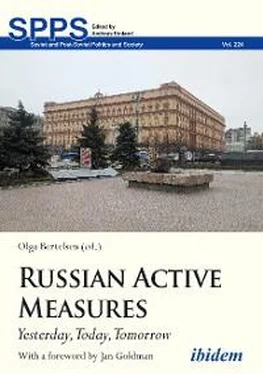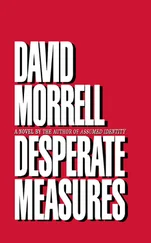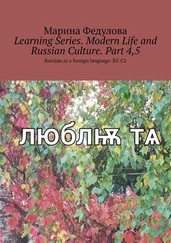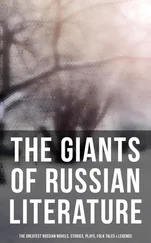They, the musicians of AC/DC, call themselves the devil’s children. Their song “Back in Black” became an anthem of the American Nazi Party. During a Komsomol meeting, Dmitrii justified his behavior by saying: “I do not consider myself collecting such things a crime. This is just mere collecting. It does not matter what the subject of this collection is. These items reflect a certain period in the history of these people. I consider listening to my favorite music and collecting music records part of my private life. And I have a right to protect my privacy, according to Soviet and international laws.” 67
In December of 1983, a local youth periodical published the results of a sociological analysis of ideological maturity among Dnipropetrovsk youth, compiled by the Komsomol scholars. According to their findings, special Komsomol raids discovered images of the American band Kiss in many student dorms at Dnipropetrovsk colleges. One could easily observe the SS symbols and Nazi signs on these images. The analysis also included a concern pertaining to the visual appearance of young people, stating that the majority of the student population in Dnipropetrovsk were wearing T-shirts that had images of the U.S. military insignia and ones that glorify capitalist countries hostile to the Soviet Union. Apparently, they purchased these T-shirts on the black market, wearing them even during their classes. 68
According to KGB officers, the “youth culture of fascist music” was shaped by the idealization of Hitler and Ukrainian nationalist leaders, such as Stepan Bandera, who were active during the Second World War. In 1983 and 1984, the police arrested the members of a “fascist Banderovite group,” students at the Dnipropetrovsk Agricultural Institute. These students, Konstantin Shipunov and his five followers, listened to “fascist rock music,” organized their own party, and popularized the ideas of Nazi leaders and Ukrainian nationalist politicians. They criticized the Russification of cultural life in Ukraine, advocated Ukraine’s independence from the Soviet Union, and insisted on protecting the national rights of all Ukrainian patriots. 69
The criminal cases of Ukrainian “fascist” heavy metal fans reveal interesting connections among various forms of cultural consumption in Soviet Ukraine in 1982–1984. The arrested members of Onushev’s and Shipunov’s groups confessed that they were inspired by the images of “clean, intelligent and civilized” Nazi officers portrayed in the Soviet TV series Seventeen Moments of Spring (1973). Based on the novel by Yulian Semenov, a famous Soviet writer of mystery and spy novels, this TV series narrated the story of Shtirlitz (Viacheslav Tikhonov), a Soviet agent posing as a high-ranking Nazi officer in Hitlerite Germany in the spring of 1945, during the final months of the Second World War. Like Carlo Lizzani’s film about Milanese fascists, this film became a real blockbuster during the 1970s and early 1980s in the USSR, romanticized in the imaginations of many “fascist” heavy metal fans and local “punks” who tried to emulate the dress code and behavior of Shtirlitz and other Nazi characters from this Soviet film. 70
As early as December of 1983, the secretary of the Dnipropetrovsk regional Komsomol committee O. Fedoseev reported to the Komsomol Central Committee in Kyiv that in February–March of 1983, local ideologists encountered the rise of the punk movement in the city of Dnipropetrovsk, but they successfully mobilized all activists and “Soviet patriots,” organizing special counter-propaganda events all over the city and the Dnipropetrovsk oblast. As a result, they managed to curtail this “fascist movement.” The Dnipropetrovsk oblast Komsomol organization developed political measures on “how to fight fascist punks,” which became a model for the entire republic. The KGB administration approved those measures. 71
However, between 1982 and 1985, the KGB and the police identified twenty new groups of neo-fascists/punks in Ukraine who had hundreds of followers. Arrested by the police and interrogated by the KGB, the members of these groups employed various fascist symbols and paraphernalia, painted their faces “in punk fashion,” and shaved their temples. 72Only a few of them, however, had anything to do with the Nazi ideology or fascism.
The KGB’s anti-hippie, anti-fascist, and anti-punk campaigns in Soviet Ukraine were intended to weaken young Ukrainians’ fascination with the products of Western (especially American) popular culture, such as films and pop music, and their idealization of Western neo-fascist images and culture. However, the results of these campaigns were contrary to what had been expected. The campaigns contributed to the immense popularity of forbidden Western cultural products among young consumers. Ironically, these campaigns amplified the interest in Western culture among the transgressors’ ideological supervisors who were supposed to erase it from the imagination of the Soviet youth.
Yet, there was another surprising and dangerous outcome of the anti-punk campaign in Soviet Ukraine, accentuated by KGB officers and local propagandists. During 1982–1984, the KGB active measures targeting “fascist punks” and the authorities’ hostile and coercive actions against disobedient youth encouraged young people to think about the state in political terms, and to openly criticize the Soviet political system, identifying it as a mafia state. 73Since 1967 and the anti-hippie campaigns in Soviet Ukraine, the KGB feared the potential “politicization” of cultural consumption by local youth. The drastic difference between the peaceful and relatively a-political Soviet hippies’ behavior and that of the Ukrainian “fascist punks” inspired by Italian films and Anglo-American rock music exacerbated the KGB’s fear. The political behavior of young Komsomol members became a dangerous cultural phenomenon. Their political programs, adopting neo-fascist cultural practices, challenged the Soviet political system that had to be replaced by a “more efficient, honest and stable” authoritarian system. Worse, many Ukrainian punks demanded the “liberation of Ukraine from Russian exploitation.” 74The cultural trends among young Soviet Ukrainians analyzed in this study—the mixture of popular culture and political nationalism—survived the KGB persecution, foreshadowing the distinct signs of revival in post-Soviet contemporary Ukraine.
I would like to express my gratitude to Irina M. Kozintseva, the inspiration and the love of my entire life. Without a sabbatical leave from Ball State University, its material and moral support, I would never have finished my archival explorations in Kyiv and Dnipro during my research trip to Ukraine in 2019. My words of gratitude also go to Olga Bertelsen who invited me to share my research findings with her colleagues in Florence, Italy, and improved my text tremendously by her thoughtful suggestions and comments. Finally, I would like to thank the Kennan Institute at t he Woodrow Wilson International Center for Scholars, Washington, D.C., for two research grants in 2018–2019 that allowed me to complete this manuscript, a part of my more ambitious book project.
Bibliography
Printed Sources
Alexeyeva, Ludmilla. Soviet Dissent: Contemporary Movements for National, Religious, and Human Rights , translated by Carol Pearce and John Glad. Middletown, CT: Wesleyan University Press, 1985.
Andrew, Christopher, and Vasili Mitrokhin. The Sword and the Shield: The Mitrokhin Archive and the Secret History of the KGB . New York: Basic Books, 1999.
“Boi tem, kto meshaet nam stroit i zhit!” Dnepr vechernii, 23 December 1982, p. 3.
Читать дальше












